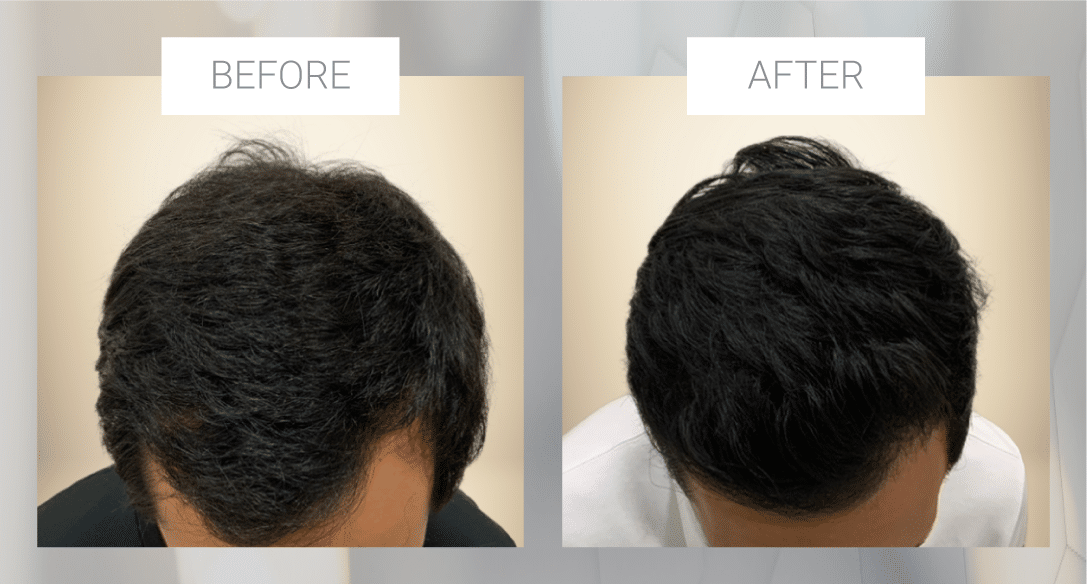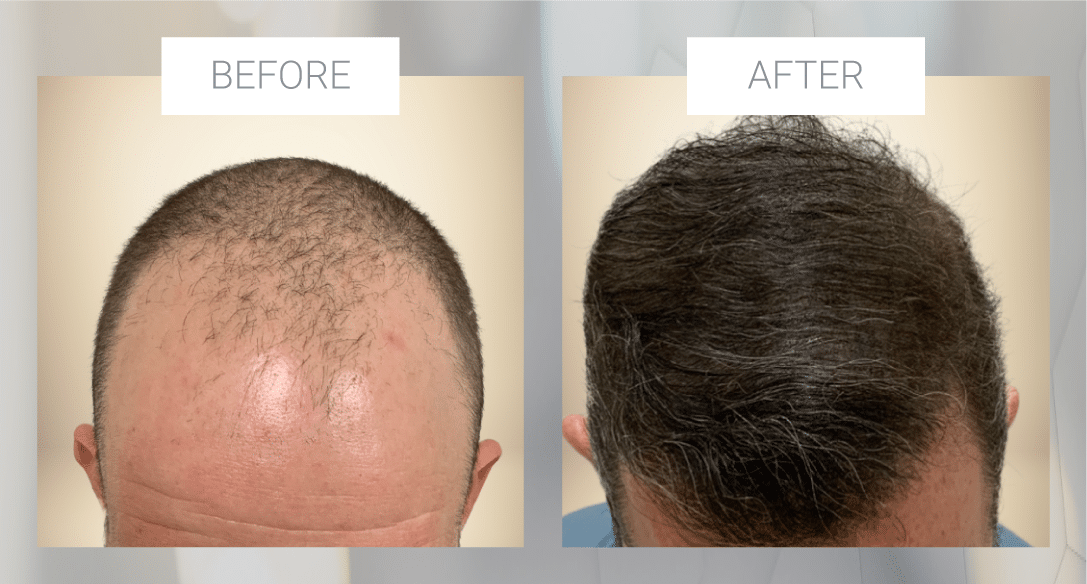People searching for solutions for various types of hair loss sometimes feel overwhelmed when they see all the competing options.
There are a lot of unfamiliar terms and acronyms – not to mention a slew of sites touting different hair restoration techniques, all claiming to be the newest and best.
We’d like to clear up some of the confusion and help you learn more about two of the most cutting-edge hair restoration treatments – Traditional FUE and Shave-Less FUE – and explain the difference between them.
First things first:
What is the Traditional FUE Hair Restoration Technique?
FUE is an acronym for this hair restoration procedure’s longer name: Follicular Unit Extraction.
This advanced hair restoration treatment is an outpatient surgical procedure that involves taking individual hair follicles from thicker areas of growth and transplanting them to thinning or completely bare areas.
The donor site for the individual hair grafts used in FUE transplant surgery is usually another part of the head with lots of healthy hair follicles – but other areas like the beard or chest may also be used.
Alternate sites are usually used when the head isn’t a good donor site due to extensive balding or previous hair transplant procedures.
What are the Advantages of a FUE Hair Transplant?
FUE transplantation is considered one of the gold standard hair restoration treatments because it can be very effective in treating hair loss.
Doctors and patients often prefer this procedure because it produces minimal scarring with almost no downtime or pain.
Benefits of FUE hair restoration include:
- Minimal scarring: Any scars from the procedure are natural looking and not easily discernible to the naked eye.
- No linear scarring: Unlike older hair transplant methods, namely strip hair transplantation aka FUT, FUE doesn’t leave a telltale linear scar.
- Minimal recovery time: The healing process is usually quite smooth, and most patients don’t need to miss work or social engagements at all.
- Minimal pain: The procedure itself is usually painless and uses only local anesthesia, and post-op soreness can be easily managed with OTC pain relievers.
- Minimal infection risk: As long as you see an expert hair restoration surgeon well-trained in best practices and techniques, the procedure is very safe, with minimal post-procedure infection risk.
- Natural-looking results: FUE hair restorations, when performed by a physician and medical team, blend in completely with your natural hair, so you don’t have to worry about looking like you’ve had a hair transplant.
- Higher transplanted hair success rate: When performed properly, FUE transplants have a high follicle viability rate, for higher hair density and thickness with fewer procedures.
- Suitable for small or large transplants: FUE can be used for everything from early hairline preservation to treating severe baldness.
In addition, the FUE procedure is suitable for treating many different types of hair loss, including male pattern baldness, female pattern hair loss, hairline recession, crown hair loss, severe balding, traction alopecia and more.
It is highly effective and can be used for everything from minor thinning to restoring a full head of hair after significant loss.
FUE can also be used to correct flawed or failed previous transplants.
It may also be used to restore hair growth to thinning beard or body hair areas, including the eyebrows.

The Benefits of a Shave-Less FUE Hair Treatment
There aren’t many downsides to FUE except for one: the traditional FUE hair transplantation method usually requires shaving the head, or parts of the head, for the procedure.
For some, this may not a big deal, but for others – including women and those looking for a discreet solution – it can feel like a very big deal, indeed.
The good news is that there is a no-shave FUE technique that lets you walk into our office and leave without anyone knowing you were here. Known as Shave-Less FUE or No-Shave FUE hair transplant, it uses the same cutting-edge technique as the traditional FUE procedure.
The difference is that with Shave-Less FUE, your doctor will transplant hair from unshaved donor sites into areas that need restoration. Neither site – the donor site or the site that needs restoration – needs to be shaved, so you can preserve your current hairstyle and length.
That means no one needs to know you’ve had anything done, and you can return to work and social obligations without looking like you’ve had something done.
This concealment can be especially important if you have scars from previous strip transplants that you don’t want on display. It can also save potential embarrassment for those who may be shy about having had a hair restoration procedure. Most people simply don’t want others to know, or they may just not like the look of a shaved head.
For those who value privacy, Shave-Less FUE is the hair restoration treatment of choice.
How Does the Shave-Less FUE Process Work?
When you have your Shave-Less FUE procedure at North Atlanta Hair Restoration, there is no advance preparation required, there’s minimal downtime and you won’t need to cancel any engagements afterward.
Daniel A. Danyo MD, MBA-Diplomate, and his medical team will extract and hand place every graft.
Although the Shave-Less FUE process is somewhat more laborious and demanding than shaved FUE hair restorations, Dr. Danyo and his team are highly practiced in it, and they pride themselves on their skill and speed.
The process can take several hours, especially for larger hair transplants, but the team can often get the whole restoration procedure done in just one visit.
After your No-Shave FUE procedure, you will walk out looking normal, with instructions for basic aftercare to ensure the best results.
Is Shave-Less FUE Better Than Traditional FUE?
Many people think it is, just because it is so much more discreet.
For those who want a highly effective permanent solution to hair loss, a natural look, and minimal disruption to their daily life, Shave-Less FUE can be the superior choice.
However, not everyone minds the shaving process, and if it doesn’t matter to you – say, you work from home or wear your hair pretty short already – a traditional FUE procedure may be your preferred choice.
The two procedures, while just slightly different in practice, yield similar results, with a high follicle success rate, minimal healing and downtime, and a wonderfully natural look.

Wondering Whether Shave-Less FUE or Traditional FUE Might Be Better for You?
Let us answer all your hair restoration questions.
Our physician-led practice offers many treatment options for those dealing with hair loss, and we can help you find the right solution for your needs.
Book your personal consultation online, or call us at 678 845-7521 to schedule an in-person or virtual consultation with Dr. Danyo himself.
The doctor will assess your case, provide expert recommendations, and help prepare a treatment plan that fits all your needs.

